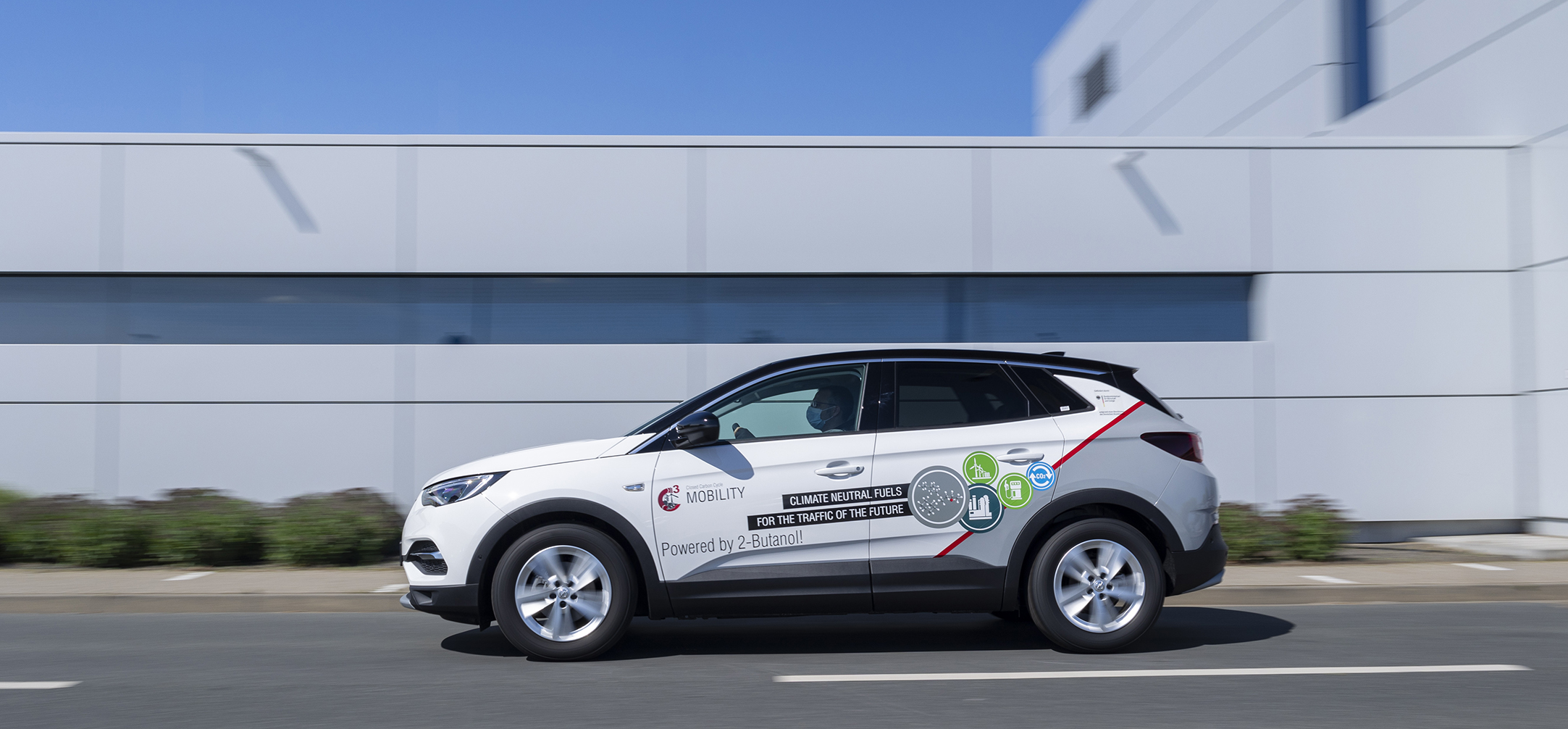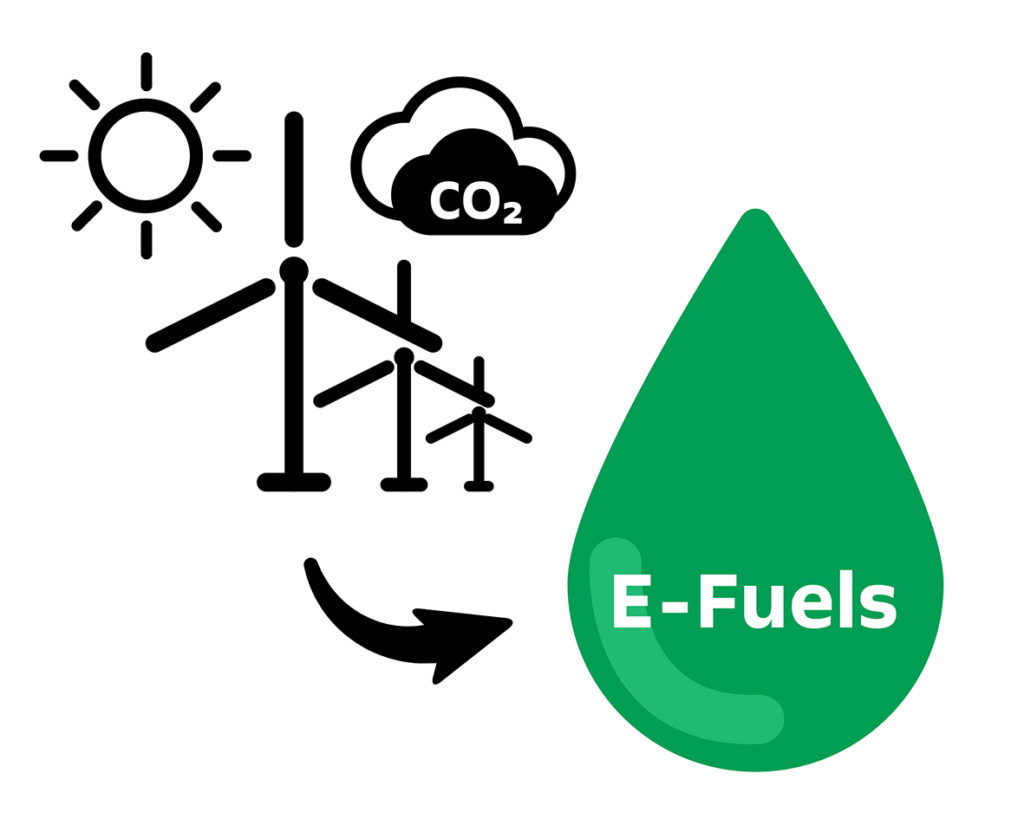
E-FUELS
The liquid fuel is artificially produced with renewable resources. It can be used in combustion engines just like fossil fuels. E-fuels burn in a climate-neutral way – only as much CO2 is released as was previously captured in the production process.
Opel Post: Mr Eitel, Mr Döhler, Opel is part of „C³-Mobility“, a consortium of stakeholder from research and economy that has investigated the question to what extent combustion engines can be powered by e-fuels. But first: what exactly are e-fuels?
Dr Felix Eitel: Conventional fuels that you get at the petrol station are based on crude oil, a fossil energy source. Synthetic fuels, on the other hand, are produced artificially. Biofuels, for example, are based on biomass. In the case of e-fuels, the subject of our study, the starting point is green electricity and water. The green electricity is used to produce first hydrogen and then fuel in a multi-stage process – depending on the chemical compound, the properties of petrol, diesel, but also paraffin can be reproduced. The special feature: The production process makes the fuel CO2-neutral.
Opel Post: How so?
Arndt Döhler: CO2 is needed to produce e-fuels from hydrogen. If the required CO2 is taken from the air or from industrial exhaust gases, so-called point sources such as lignite-fired power plants, combustion engines can be operated in a climate-neutral way. Don’t misunderstand: The combustion of e-fuels basically produces a similar amount of exhaust gases as the combustion of conventional fuel. But during the production of e-fuels CO₂ is captured. The greenhouse gas becomes a raw material, so to speak. You can compare this with burning wood – only as much CO2 is released as was previously stored in the wood. The bottom line is that no additional CO2 is released into the atmosphere.
“If you power an internal combustion engine with e-fuels instead of petrol, no more CO2 is emitted than was taken out of the atmosphere to produce the synthetic fuels.”
–Arndt Döhler –
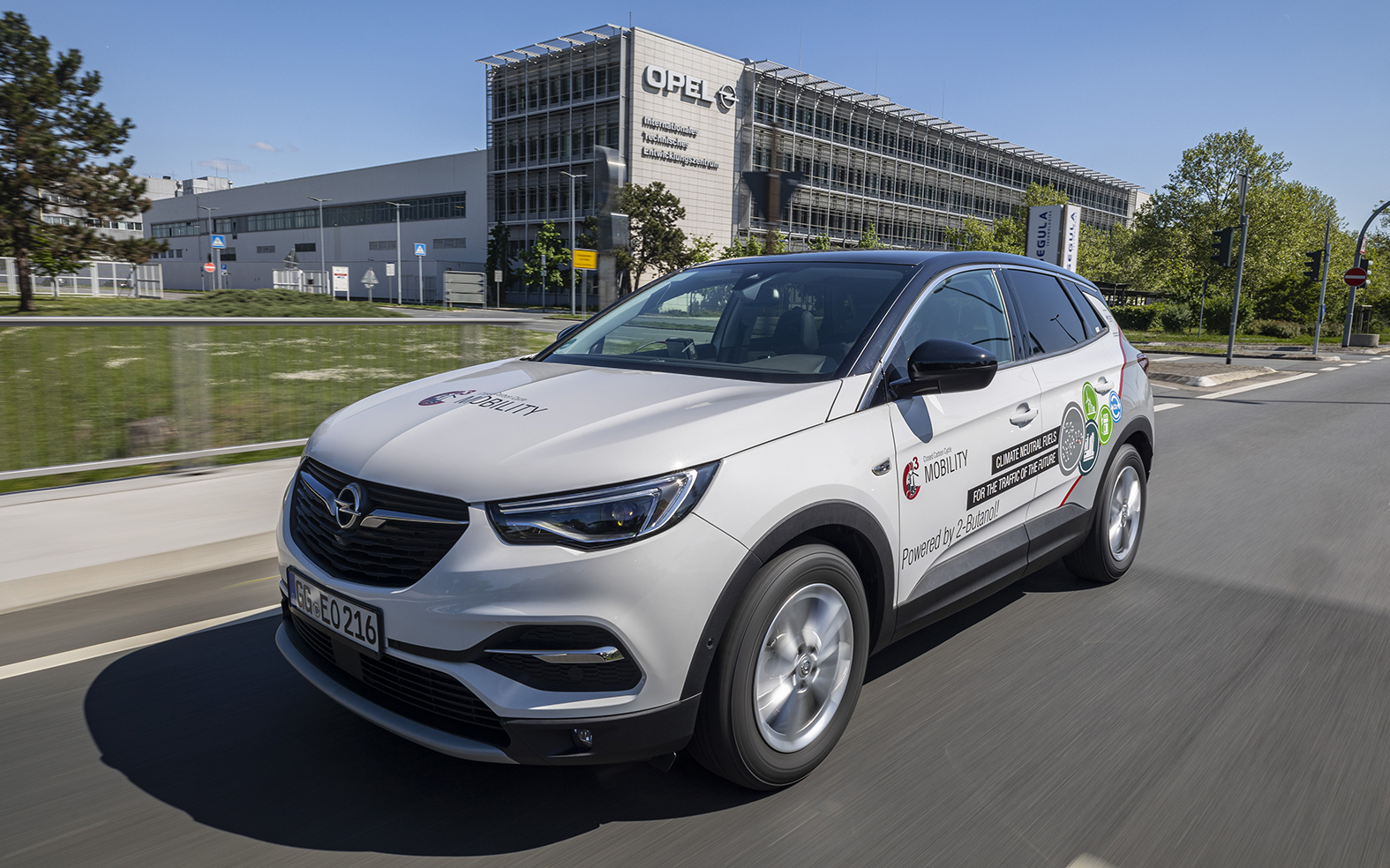
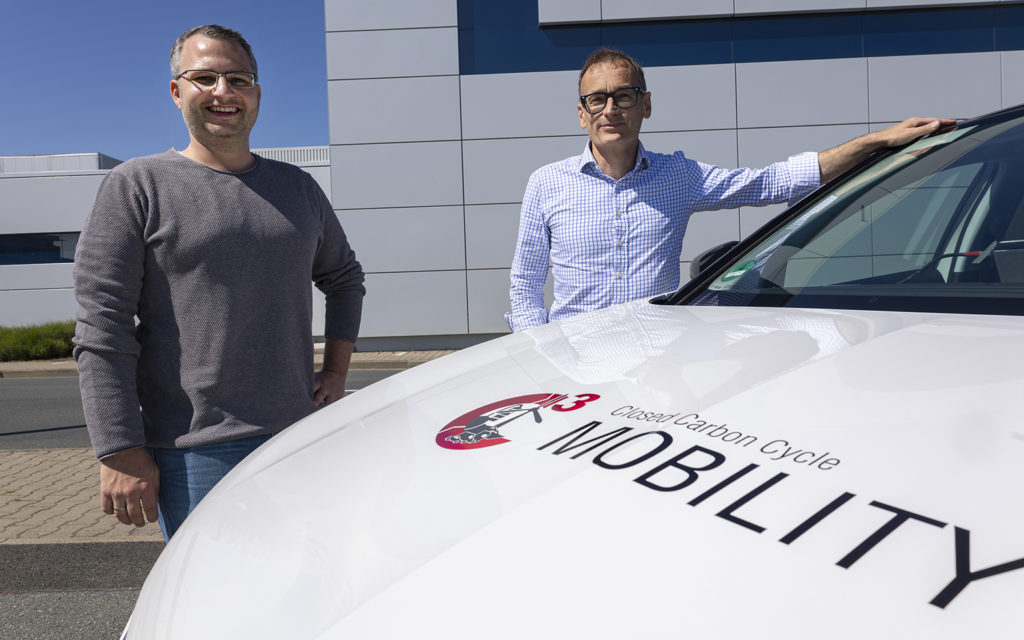
Opel Post: Opel has announced an electric offensive: By 2024, all Opel models will also be available in electrified versions. From 2028 onwards, the company will rely completely on battery-electric vehicles in Europe. How does this strategy fit in with its research theme, which is aimed at vehicles with combustion engines?
Arndt Döhler: There is no question that the share of electric cars is increasing rapidly. Last year alone, more than 350,000 new electric vehicles were registered in Germany. But the potential use of e-fuels is also about the inventory fleet. At the moment, the majority of that fleet still consist of cars with combustion engines. About 46.5 million passenger cars in Germany alone. In other words, there are already 46.5 million potential electric vehicles on German roads today. We would only have to run them on eco-electricity based CO2-neutral fuel!
Dr Felix Eitel: If you want to reduce emissions from the transport sector effectively and quickly, not only new cars but also the inventory fleet must contribute to CO2 reduction. E-fuels can make a significant contribution to this. So, this is not an “either-or” scenario, but an additional part of the story. If only the German passenger car fleet were to be operated with e-fuels, the annual CO2 savings potential would be about 120 million tons. This would correspond to a reduction of about 15 percent of Germany’s total CO2 emissions. Now, e-fuels can also be blended with fossil fuel, known as “blending”. If only 1 percent e-fuels were added to the total German fuel mix, the equivalent of 1 percent of the passenger car fleet could be operated in a CO2-neutral way – that is 465,000 vehicles. This is in the same order of magnitude as the current new registrations of e-vehicles that Arndt just mentioned. It illustrates the great potential that could be raised here and that must be used in the interest of our society!
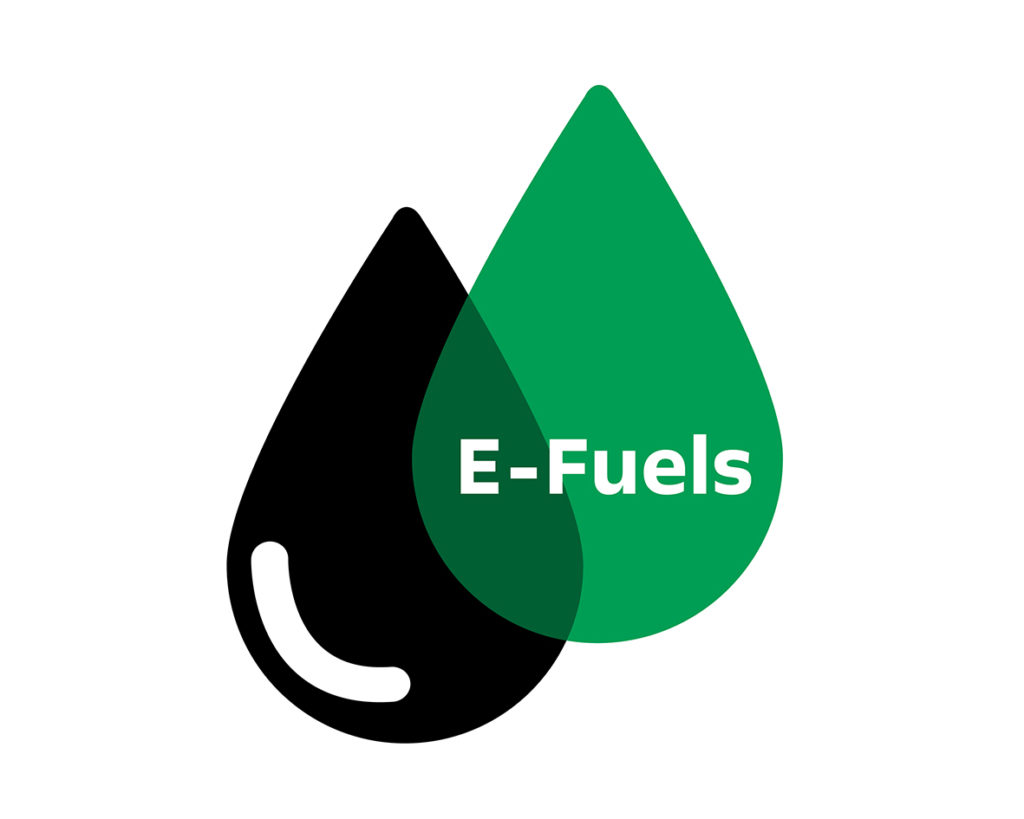
BLENDING
E-fuels do not have to be used in pure form, they can be added to fossil fuel, this is called blending.
“If you want to reduce emissions from the transport sector effectively and quickly, not only new cars but also the existing fleet must contribute to CO2 reduction.”
– Dr Felix Eitel –
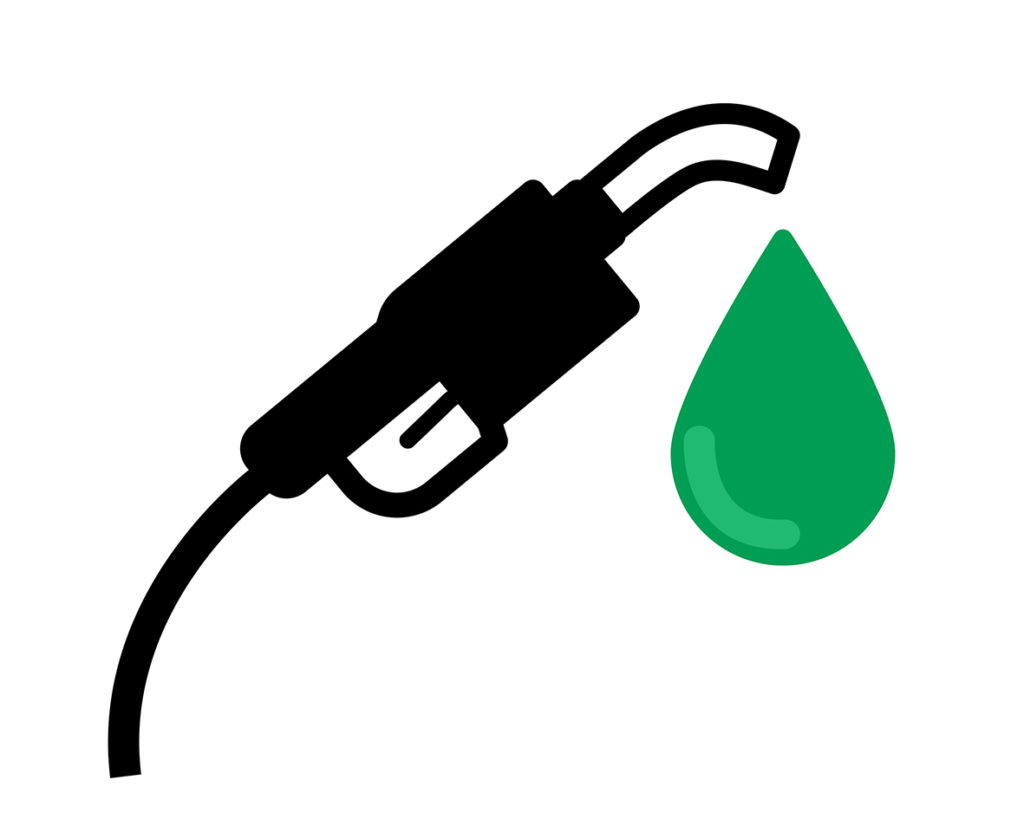
DROP-IN-FUEL
The synthetic fuel corresponds to the conventional fuel in all essential properties. Therefor, it can be used directly – without technical adaptations.
Opel Post: From the production of regenerative fuels to market launch scenarios – the “C³-Mobility” project takes a holistic approach. 30 partners completed 27 work packages in five areas. What exactly is Opel’s part in this?
Arndt Döhler: On the Opel side, colleagues from Design, Laboratory, Simulation, Testing and Workshops were involved. Together with RWTH Aachen University and the company Tec4Fuels, we investigated a promising candidate among synthetic fuels: 2-butanol, an alcohol. With an octane number of 105, the fuel is even more knock resistant than classic “Super”. Thanks to its high energy density, 2-butanol is compatible with conventional fuel pumps and injection nozzles. Before the first hardware tests, numerous simulations were carried out. Among other things, we examined the spray pattern of the injector when using 2-butanol. After the virtual proof-of-concept, we ran tests with a real engine on the test bench.
Opel Post: Which engine was used on the test bench?
Dr Felix Eitel: It was a 1.2-litre three-cylinder petrol engine. A standard engine, off the shelf, without any modifications. We tested pure 2-butanol, but also mixtures with fossil and synthetic petrol. The tests have shown that the engine can be operated in all variants. What is exciting is that if you mix conventional, i.e., fossil petrol with 2-butanol or synthetic petrol, the e-fuel acts as a booster – the higher the synthetic content in the mixture, the less fossil CO2 is released during combustion.
Arndt Döhler: I would like to mention here that an important part of the project was to test the so-called backwards compatibility of fuels according to EN228 in the inventory fleet.
Opel Post: Backwards compatibility according to EN228 – what is behind this?
Dr Felix Eitel: The EN228 standard describes the current, commercially available petrol that you can already fill up at the petrol station today. In addition to 2-butanol, we have tested how our engines react to synthetic petrol according to this current standard. A synthetic fuel according to EN228 is a so-called drop-in fuel. And these drop-in fuels can already be used in all commercially available engines without restrictions. And it is precisely this drop-in capability that makes the described major leverage in CO2 reduction possible.

Climate-neutral fuels
C3-Mobility is a collaborative project funded by the Federal Ministry for Economic Affairs and Energy. The goal: to develop CO2-neutral paths for future mobility. The project focuses on methanol-based synthetic fuels. The entire value chain from production to market launch is being examined. The consortium includes 30 partners from the fields of energy supply, process engineering, engine and vehicle design as well as research and development. Within the consortium, Opel has investigated the vehicle suitability of synthetic fuels in small-volume petrol engines under real driving conditions.
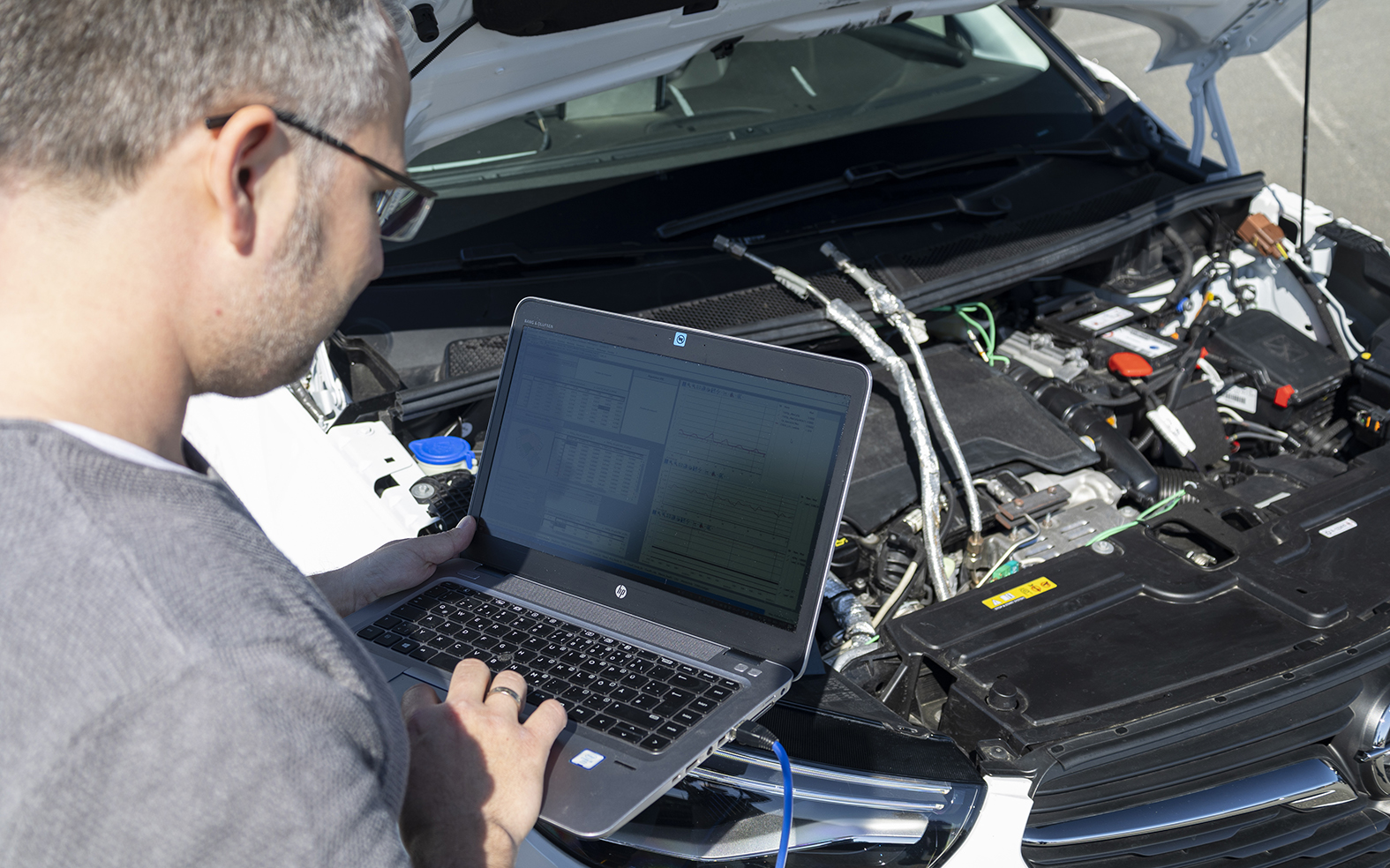
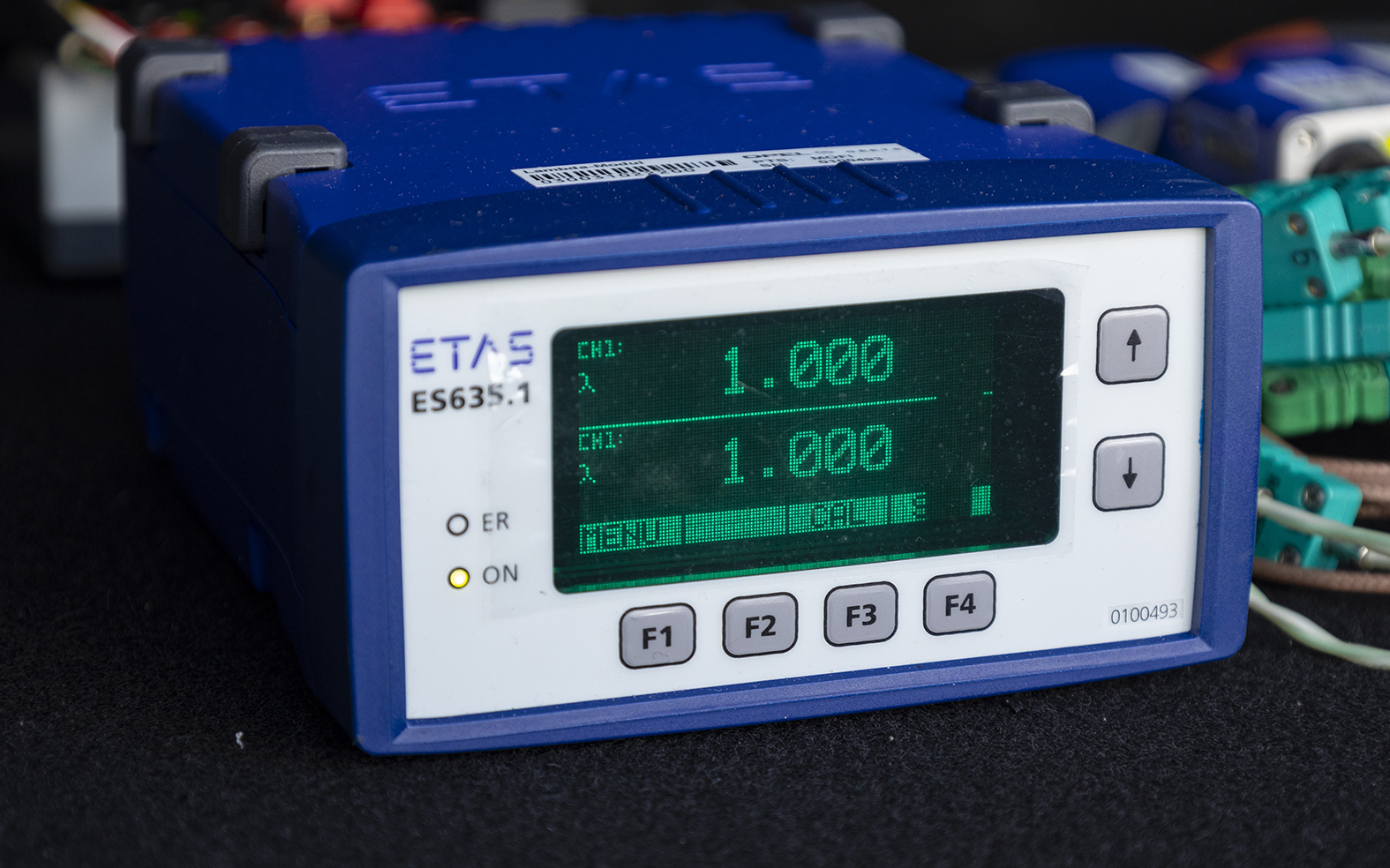
Opel Post: In order to test the practical suitability of the e-fuel under real-life conditions, you chose an Opel Grandland with a 1.2-litre petrol engine as the test vehicle. You optimized the power unit for use with 2-butanol. What surprises did you recognize on the road?
Arndt Döhler: None – despite the massive modifications to this engine. To exploit the full potential of 2-butanol, the compression ratio was increased to 13:1. During the 3,000 kilometers we have been on the road and on the test bench so far, we have tested the engine calibration developed on the test bench – and confirmed its quality. Whether it’s a cold engine start at 10 degrees or an emission test on a roller dyno: The tests under real conditions confirmed the compatibility in all aspects – also with regard to the applicable Euro 6d emissions standard. The emissions limits were met.
Opel Post: There are not many people who have been on the road in a car powered by e-fuels – what remarkable experience have you made?
Dr Felix Eitel: (laughs) Unfortunately, I have to disappoint you. Our vehicle is equipped with measuring technology to record temperature, pressure and lambda while driving, and it also has a striking “C3 Mobility” design, but everything else is largely unspectacular. You can fill up the liquid 2-butanol like normal fuel. While driving, you don’t notice any difference at all. But that is precisely the great advantage of synthetic fuels: basically, nothing changes for the driver.
“We have confirmed the practicability: The combustion engine can be used with synthetic fuel.”
– Arndt Döhler –
Opel Post: The work packages have now been completed and the final event with all project stakeholders will take place soon. What is your conclusion?
Dr Felix Eitel: Our research results are promising and show the high potential of e-fuels: 2-butanol can already be used in existing engines without major modifications. The synthetic fuel used was usable without performance losses or issues in engine tests and specific material tests. It did not lead to any failures. These results are supported by the investigations of the other project partners in C³-Mobility and allow us to look to the future with confidence for an upcoming use of the e-fuels.
Arndt Döhler: We have confirmed its practicability: Internal combustion engines can be used with the synthetic fuel 2-butanol as well as synthetic petrol. A key advantage of this solution is that the existing logistics and distribution infrastructure is already in place. One disadvantage of 2-butanol and synthetic fuel in general is currently still the high price. Here, politics is also called upon. For example, the price of fossil and synthetic fuel could be brought into line by adjusting the mineral oil tax.
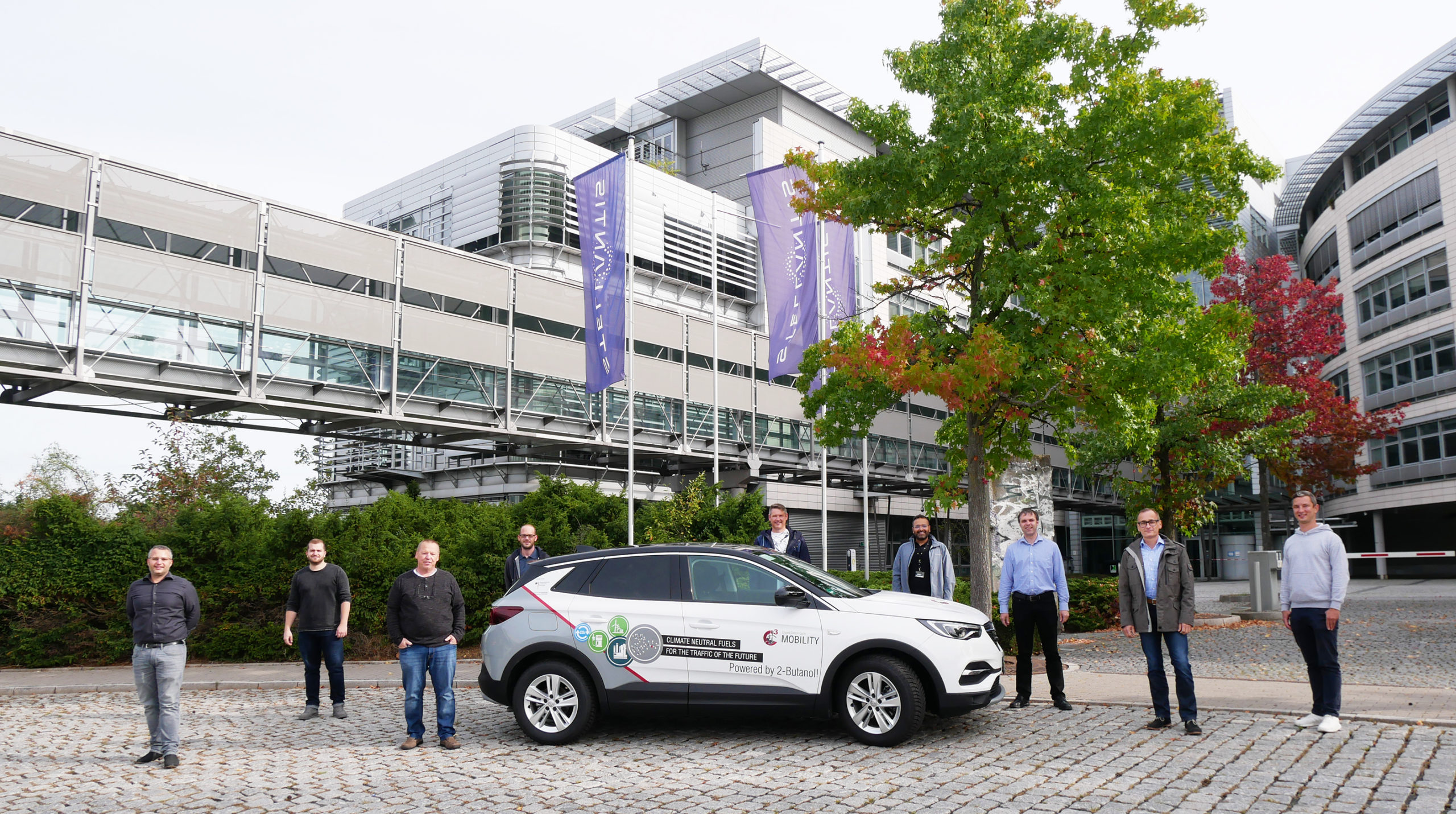
June 2022
